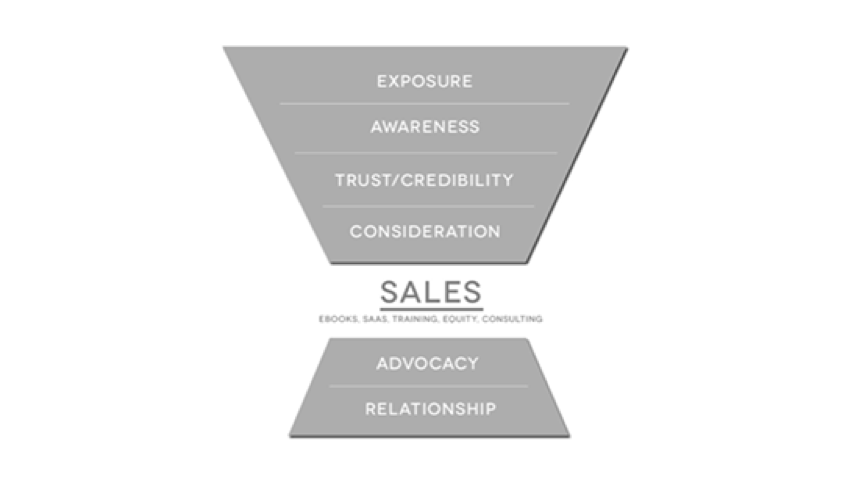
by Mark Lindquist
Republished from Skill Labs, November 2, 2017
Sales team members often find themselves getting the short end of the stick. Though they’re expected to hit rigorous sales quotas, they often have little control over the quality of leads being sent to them from marketing – or any influence over the buyer journey at all, up until the very end.
Unsurprisingly, these disconnects can lead to conflict. Research suggests that “51 percent of marketers are not satisfied with the level of communication between the teams and 53 percent of sales professionals are not pleased with marketing’s support.”
Creating happier, better-performing salespeople comes down to understanding the unique challenges they’re facing today, as well as empowering them with the resources they need to be successful.
Why Sales is Suffering
According to data gathered by Hubspot on marketing and sales:
- Only 29% of people want to talk to a salesperson to learn more about a product, while 62% will consult a search engine.
- 57% of salespeople believe buyers are less dependent on salespeople during the buying process.
- Only 24% of sales emails are opened.
Further, NuGrowth Solutions points out that “70% of the buyer’s journey is complete prior to speaking with a salesperson.”
Taken together, it’s clear that more and more of the sales process these days is happening independent of salespeople. Keeping them relevant and enabling them to use their talents for closing means equipping them with new tools – one of which is marketing content.
Use the strategies below to help your sales team close more leads by leveraging marketing content.
Tear Down Your Silos
Creating silos between departments may facilitate operational efficiency, but it risks isolating your sales team.
Think about the number of questions your salespeople are asking on their calls with prospects, leads, and customers. Wouldn’t that insight be useful for marketing team members? And, conversely, wouldn’t the information gathered by customer service, engineering, and other departments help make sales more effective?
In the specific context of marketing content, breaking down interdepartmental barriers can help in a number of different ways:
- Ask your sales team to report common questions or objections they’re heading to the marketing team so that the answers can be built into future content pieces.
- Request that sales team members capture data on any content pieces their leads mention (as well as their favorable or negative perception of them) in sales calls to inform the development of future content.
- Have your marketing team regularly share new content pieces with salespeople so that they can offer up relevant pieces when in conversation with prospects or leads.
Get sales and marketing to play nicely together, and both will benefit.
As sales and marketing begin collaborating more effectively, the insight shared from sales can help the marketing team to fill content gaps when supporting buyers on their journey.
Remember that the buyer journey involves several different stages:

At each point in the funnel, different types of content can be used to fulfill buyers’ needs and advance them in the buyer journey.
As an example, prospects who are at the early exposure and awareness stages of the funnel don’t need complex white papers or use cases. They need engaging content that speaks to their pain points and encourages them to find out more.
Sales and marketing can work together to create content that supports all funnel stages.
- The marketing team can audit which stage each piece of existing content supports, revealing gaps that can be filled with new content.
- The marketing team can then develop additional content pieces, in collaboration with information shared by the sales team.
- The sales team can then push this content out at the appropriate stage, while also reporting back to marketing on the performance of different pieces.
This process can be fine-tuned to fix more granular funnel problems as well.
Imagine that your sales team is complaining that they don’t have enough quality leads coming through the pipeline. Knowing that your marketing team has two options:
- Develop more top-of-funnel content to increase the total number of leads entering the funnel (presumably increasing the number that eventually becomes MQLs and SQLs), or
- Create more effective middle- and bottom-of-funnel content to help sales team members convert more of the leads that do exist.
Use Content to Stay Top-of-Mind
The strategies above describe the ways marketing content can be used to attract and convert new leads. However, it’s important to note that – regardless of how marketing content is used – conversions may not occur right away.
Content comes to the rescue again as a lead nurturing resource. As a report by Demand Gen found, “Nurtured leads produce, on average, a 20% increase in sales opportunities versus non-nurtured leads.”
Content can create lead nurturing opportunities by giving salespeople a reason to reach out to prospects, leads, and customers as it’s released. In an article for the Content Marketing Institute blog, contributor Alex Lopes writes:
“Instead of the usual, “I would love to connect to hear how things are,” that your sales reps shovel out to prospects, your content marketing can give them a value-added reason to reach out.”
Again, sales and marketing can work together here, with marketing developing materials needed to meet specific lead nurturing objectives, as defined together.
The key is collaboration. Every organization’s process for leveraging marketing content in the sales process will look different. What’s important isn’t the specific process. It’s the two teams working together toward the shared goal of closing more leads.
